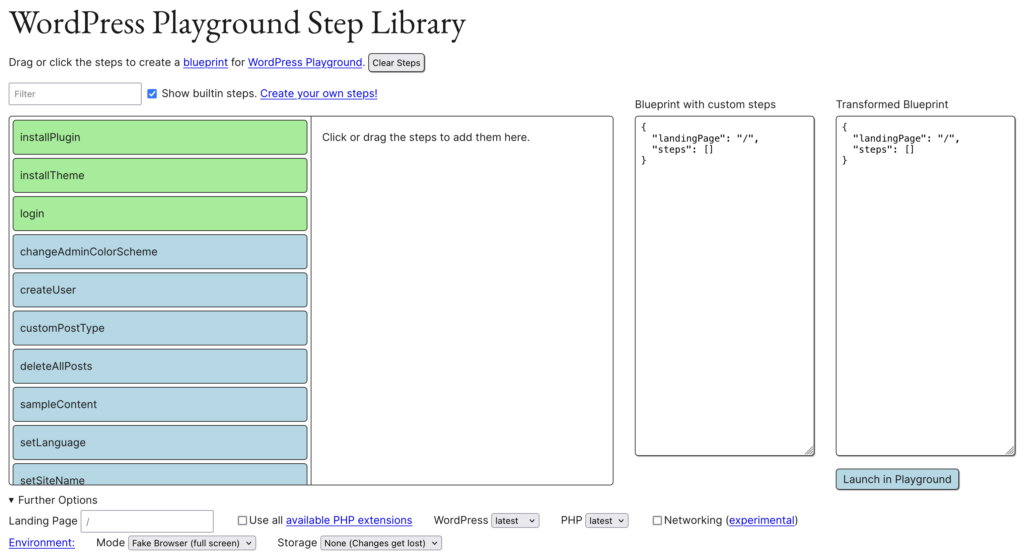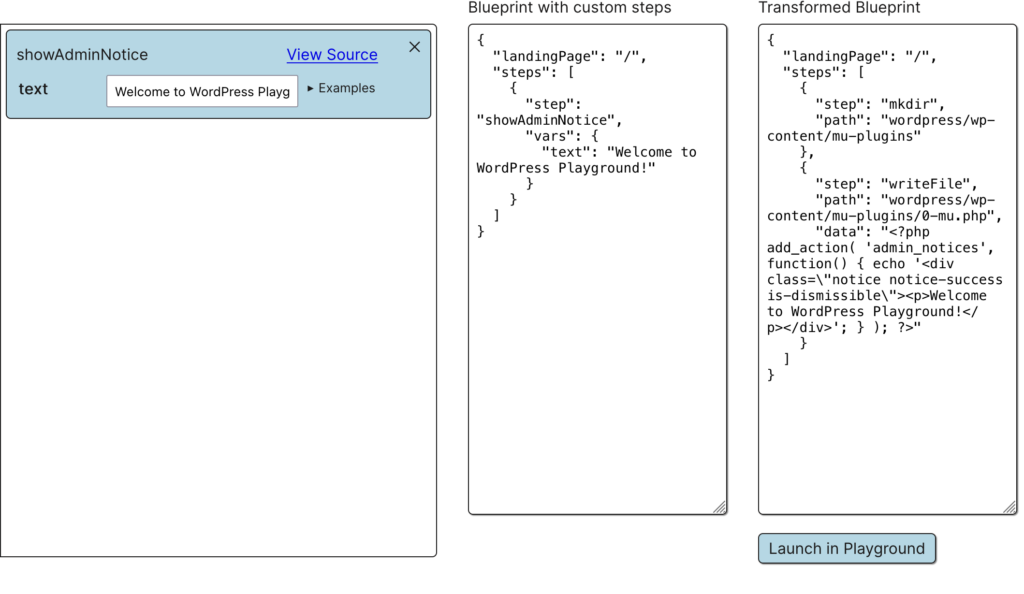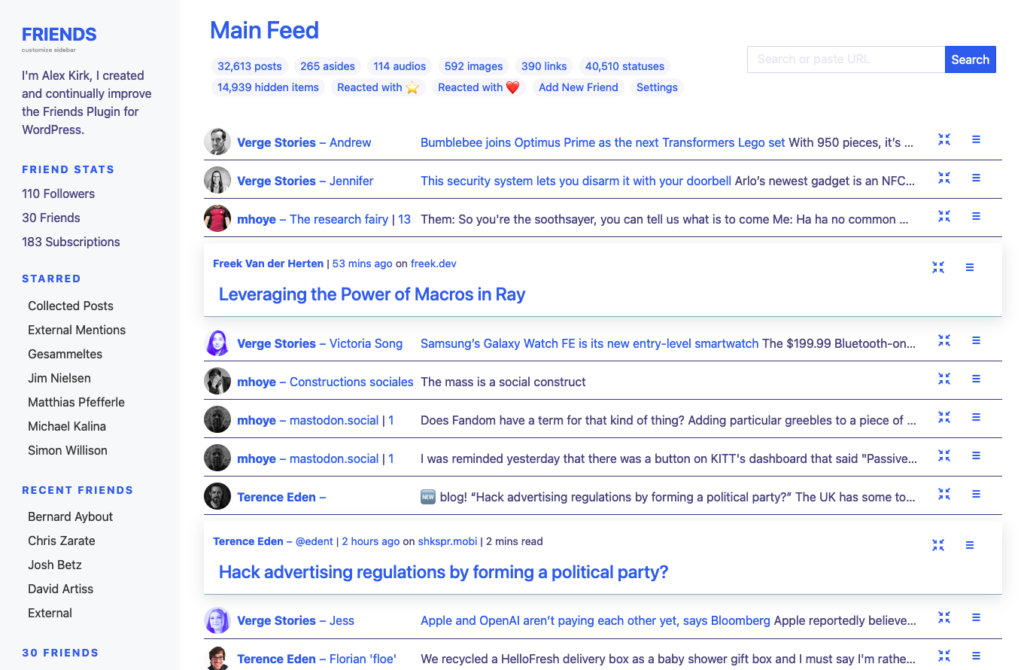WordPress Playground is this fascinating tool that allows you to run WordPress without a server. It achieves this by running PHP in your browser by using WASM. It sounds cool, and it makes for numerous interesting demos, as its original creator Adam Zielinski showed at WordCamp Europe 2024: WordPress Playground – use WordPress without a server (recording, slides).
Having built Translate Live for WordPress.org–a way to translate plugins and themes without having to use a table UI–I have a bit of experience with having WordPress Playground do more complex things. But I also know that it be a bit difficult to get started with that.
Blueprints to start a Playground
So, as you can see with Translate Live, a WordPress Playground can be booted into configurations, and these configurations are (currently) called Blueprints. They are JSONs made of options and a list of steps. You can choose from a number of available steps like installPlugin to share a link with someone to try something in WordPress without having to set up hosting for that.
The available steps are somewhat basic but powerful. It can be abstract to think of what to do with them.
So, I had the idea that while the available steps of WordPress Playground are quite universal, we could build a library of “more meaningful” steps that do and “transpile” them to existing steps.
Build a Playground Blueprint with a Drag and Drop UI
Welcome to the WordPress Playground Step Library: Combining these steps with a click (or drag and drop) UI, it allows you do quickly create a WordPress Playground that does things you didn’t know you could easily do. Here is a screenshot:

So, for example, it could be useful when you share a WordPress Playground link to add some explanatory text, and what better to use than the infamous1 Admin Notice? But, how do you do it?
Turns out, you’d need a small mu-plugin. But with a custom step, it’s just a matter of adding that step:

So such a “custom blueprint” for playground would be this:
{
"landingPage": "/",
"steps": [
{
"step": "showAdminNotice",
"vars": {
"text": "Welcome to WordPress Playground!"
}
}
]
}But careful. The above doesn’t run in Playground. There is no showAdminNotice step. But the Step Library automaticaly transpiles to a valid blueprint:
{
"landingPage": "/wp-admin/",
"login": true,
"steps": [
{
"step": "mkdir",
"path": "wordpress/wp-content/mu-plugins"
},
{
"step": "writeFile",
"path": "wordpress/wp-content/mu-plugins/0-mu.php",
"data": "<?php add_action( 'admin_notices', function() { echo '<div class=\"notice notice-success is-dismissible\"><p>Welcome to WordPress Playground!</p></div>'; } ); ?>"
}
]
}So which one is easier to remember? :-) You can try this blueprint in WordPress Playground now! It will look like this:

I’ve made the Step Library so when you configure it, its URL reflects to your custom steps (this is the above in the Step Library) so that you can easily share them. If you wanted to share the actual running playground, share the URL of the “Launch in Playground” link.
The Playground link will start with https://playground.wordpress.net/, the Step Library link with https://akirk.github.io/playground-step-library/.
The Step Library is hosted on Github and you can contribute your own steps! Also happy to receive new issues with ideas of what steps might be useful to add. There also the Blueprints Gallery that showcases further uses of Playground and is also open to contributions!
So far, I have added these steps:
- changeAdminColorScheme
- createUser
- customPostType
- deleteAllPosts
- sampleContent
- setLanguage (this one is coming soon to Playground natively!)
- setSiteName
- showAdminNotice
I’m curious if this tool can help you build a WordPress Playground, please tell me by commenting via Mastodon or ActivityPub, and spread the word about the tool!
Oh, and checkout the Awesome WordPress Playground link collection if you want to learn more about Playground or check out interesting applications! Happy playing!
- This is traditionally misused by plugins to prompt you to upgrade so that your wp-admin screen can get bloated with this. To the point where there is an Admin Notices Manager plugin that allows you to keep them under control. ↩︎


